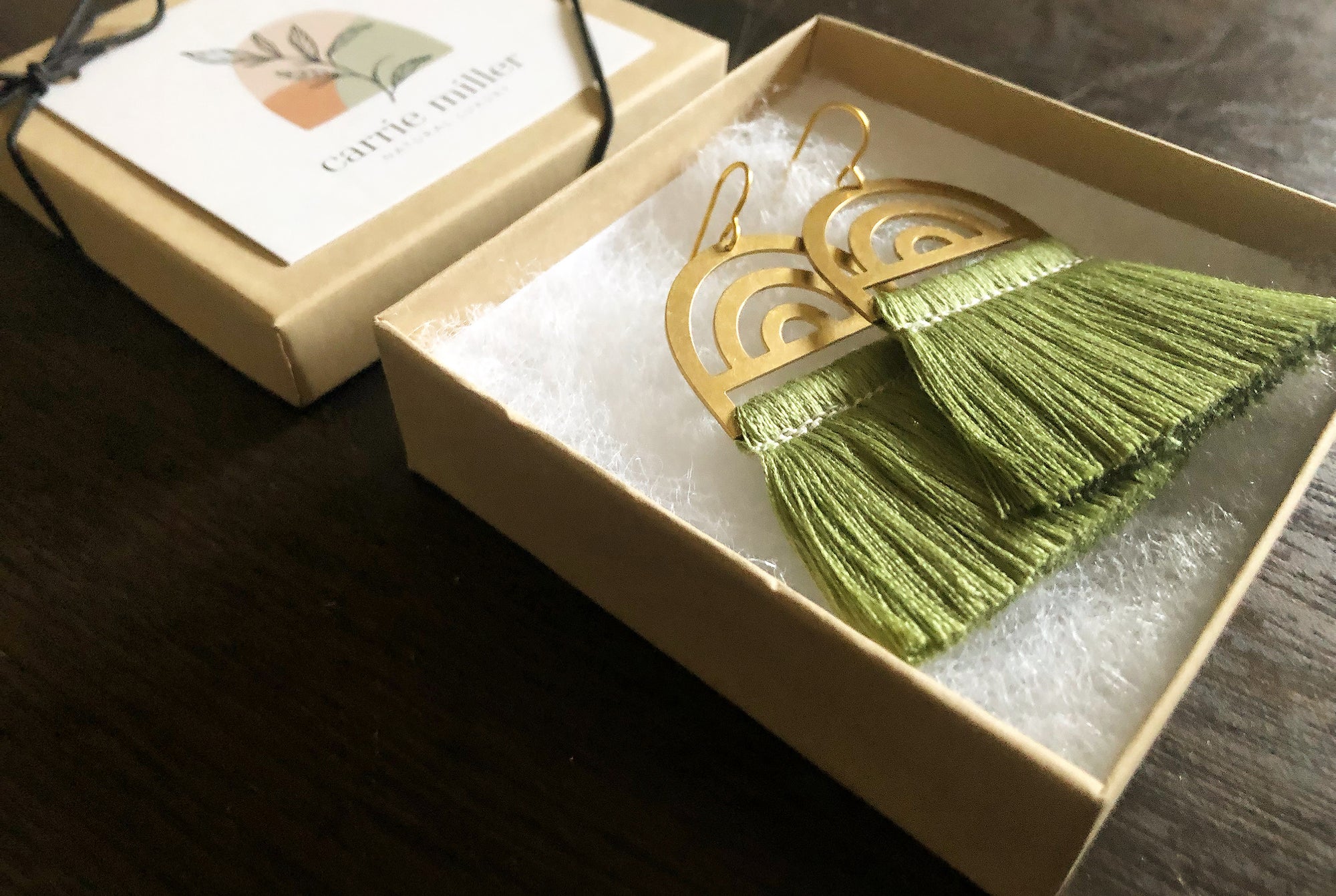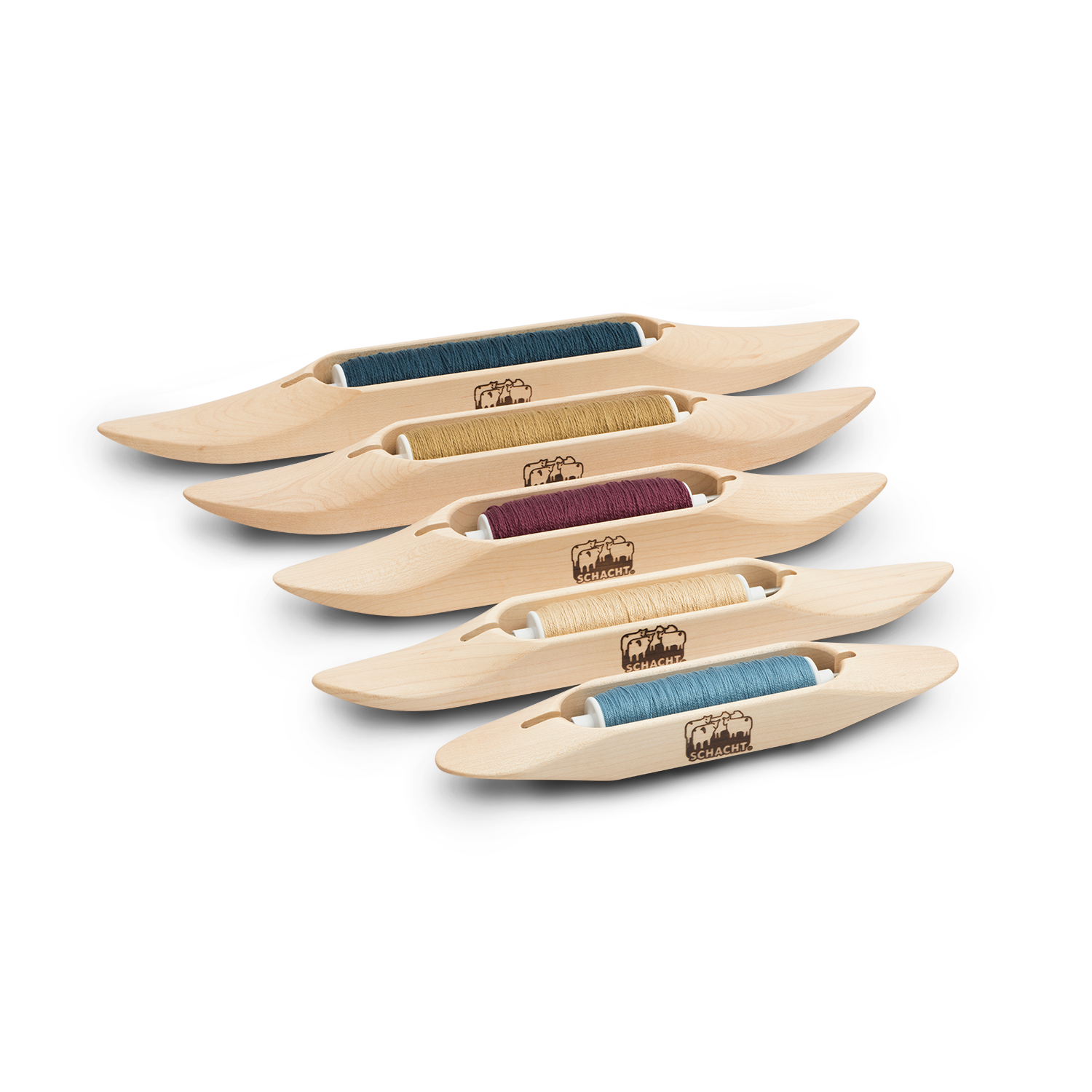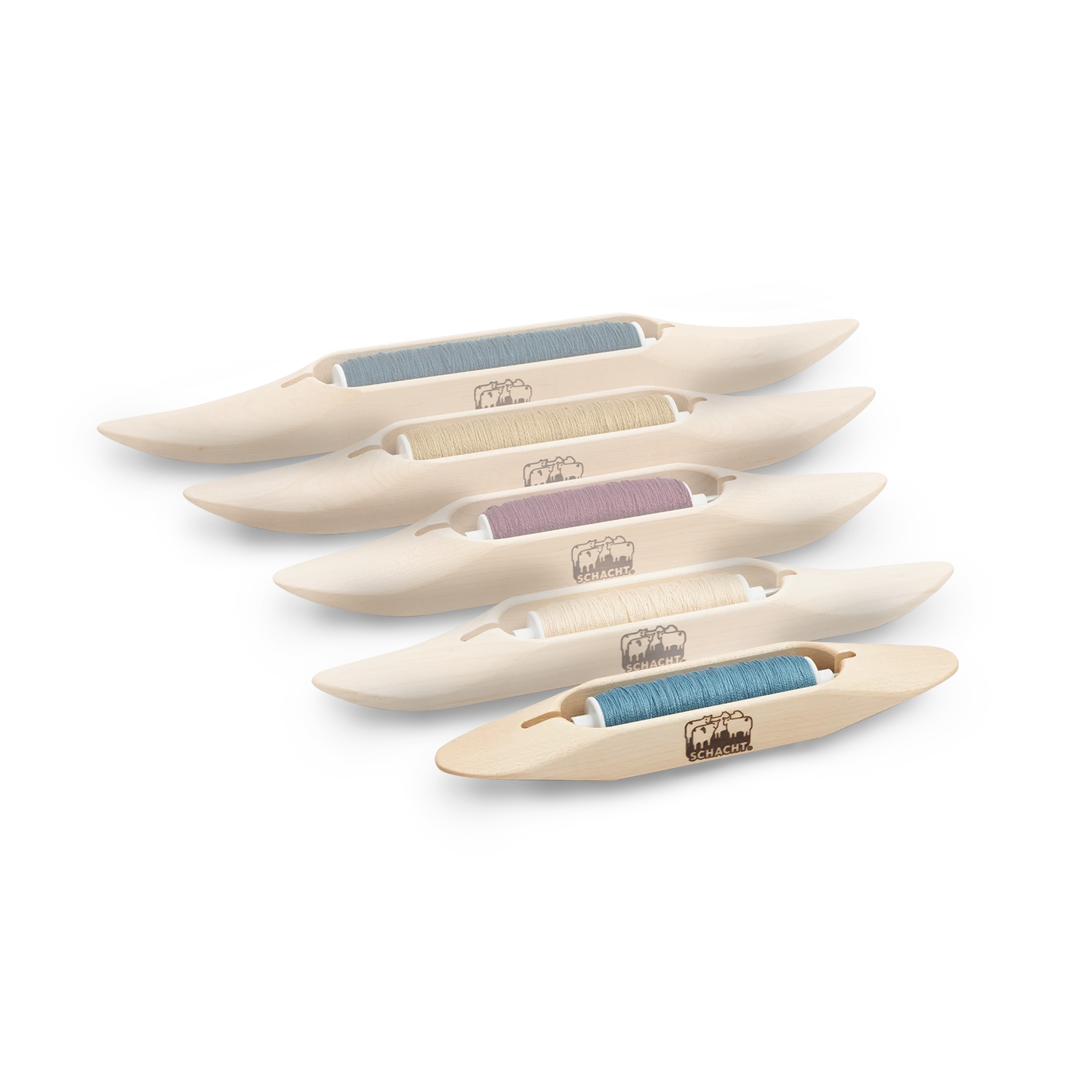By Carrie Miller
Leave all of your fears behind and embark on an amazing journey of weaving with silk. Learn to choose your yarn, prepare your equipment, warp with ease, and have fun trying something new! Recommended for intermediate weavers.
Silk fiber comes from the cocoon of the silkworm and is primarily cultivated. The way the fiber is processed determines its weight, durability, texture, and luster. When you picture silk, you’re probably thinking of the iconic shiny silk satin fabric often used in evening gowns. But silk is a fiber that becomes an enormous range of fabrics including bumpy noil, lush velvet, and transparent chiffon. It is overall a less forgiving fiber than cotton. It's soft and smooth, takes dye extremely well, and has a reputation for being expensive.
Read Karen Selk’s history of silk to learn about where it originated, how it is processed, and more.
As you’re choosing yarn, be aware of the weight and texture. Select a more durable yarn for your first warp. Keep your EPI under 20 and experiment with fine or slippery silks in the weft before using them as a warp.
Tussah, noil, and wild silk yarns have more texture and are less slick than a standard mulberry silk yarn. Working with one of these textured options is great to start with because you can avoid the slipperiness that so often makes problems for weavers. This Silk Noil from Gist is a great beginner-friendly place to start. Another option for those just starting with silk is to use a silk blend yarn. Just be sure that the fiber its blended with has properties that will alleviate silk’s challenges and not make them worse! For example, a silk/cotton blend like this one offers the beauty of silk, with the strength and simplicity of cotton.
The warp yarn throughout this tutorial is an example of what is possible with silk as your skills develop. The warp is 35/2 Tussah Silk dyed with marigolds and indigo. The sett is 40 EPI and the weave structure is plain weave. The weft is 120/2 Bombyx Silk and 8/4 cotton rug warp. I’ve strategically chosen a more durable tussah warp but paired it with an extremely fine weft to achieve the fabric weight I wanted. Please note: fine yarns like these should not be your first warp but they are something to work towards!
Your Schacht Equipment
Weaving with silk is more accessible than you might think. The equipment you use for other yarns will work great for silk as well. Consider adding an End Delivery Shuttle to your loom room to make silk weaving even more enjoyable. Prepare your loom, reed, and other accessories by giving everything a good cleaning. Clean equipment means you don’t have to worry about ruining your expensive silk yarn before you get the chance to weave. Whether you’re weaving on any of the Schacht floor looms or a rigid heddle loom, you’ve set yourself up for success already by working on a quality loom. This tutorial focuses on floor looms, but if you are working on a rigid heddle loom, this silk project from Loom Theory by Stephanie Flynn Sokolov is a fun place to start.
Warping Silk with Confidence

I’ve become rather ambidextrous with warping. I highly recommend getting comfortable with both front-to-back and back-to-front because each one has applications it is best for.
The characteristics of the yarn and your comfort level with warping methods are the most important factors in deciding which way to warp your silk yarn. In the beginning, stick with the warping method you know best and select a yarn that can be warped successfully this way. For example, if I’m warping front-to-back with my first silk warp, I would select a yarn that is durable, low EPI (below 20), and/or a blend for my warp. Over time, as you develop your comfort level with both warping methods, select your yarn first and then warp in the way that best suits the yarn.
As with other more sensitive fibers, there are many reasons to choose to warp back-to-front with silk, but it isn’t always necessary. When warping back-to-front, the yarn is organized as it passes around the lease sticks before being wound onto the back beam. The challenge of the yarns tangling in the heddles is completely avoided. Back-to-front is highly preferred for finer silk and dense setts so keep that in mind as you progress with weaving silk.
Whether you warp back-to-front or front-to-back, make sure to wind on slowly and continually detangle. Silk yarn isn’t forgiving when pulled roughly through the lease sticks and can easily tangle before going through the heddles. Create ‘air’ or space between the yarns by separating and spreading them out as much as possible during the winding process. And as Halcyon notes in their silk weaving tips, make sure to use a sturdy divider material such as cardboard between layers on the warp beam. Silk does tend to slip and slide so keep those layers in place!

Thrifty Thoughts
Because of the price point, sampling with silk can feel like sacrilege. Depending on your project, an alternative is to wind the warp 6” longer and sample in those first few inches. Keep in mind, there are fewer changes you can make at this point, but it does allow space to try out different wefts, test tension, check for threading errors, and so on. In the example, I started with a heavier weft and more frequent picks of a cotton rug warp between silk wefts. This sample helped me get a feel for the warp yarn while deciding on the weft. The downside of sampling this way is that if you decide to adjust the sett of your project after sampling, you will need to cut off the sample and re-sley the reed before tying on again.

Since silk is so precious, there’s no need to throw any away. Use your thrums for fun little accessories. I use mine to make these earrings.
Weaving
In terms of weave structure, I recommend plain weave for the first silk warp. Increase the complexity of woven projects in steps and add elements one at a time. If I want to try a new yarn that I know will stretch my skill level, I will keep the other elements of that project simple and well within my comfort zone. By doing this, I know I can focus my attention on a single new challenge, and I can avoid the frustration of multiple issues arising all at once. In the example yardage, the weave structure is simply plain weave. Try adding design elements by using multiple weft yarns, creating stripes, or using clasped weft. Once you’ve developed a level of comfort with silk, add pattern weaves back into the mix.

Once the warp is safely on the loom, weaving with silk is very enjoyable. Just make sure to test and quickly fix any threading errors. Crossed threads can quickly cause breakage. Extreme draw-in can also cause breakage, so be extra mindful of your weaver’s angle. Use an End Delivery Shuttle if you find yourself struggling with selvedges due to slippery silk. Most importantly: have fun! Don’t let the preciousness of silk keep you from a little experimentation. Your skills will increase quickly through some good old-fashioned trial and error with a variety of weft yarns.
Caring for Handwoven Silk
Silk has a reputation for bleeding dye and being a general pain to launder but if you’re careful, there is no need to worry. Many silks can actually be hand washed. Avoid dye bleeding by washing with cool water first and then doing a second rinse with warm water. Use a couple drops of mild detergent and let soak only until the fabric is thoroughly wetted out. Do not leave silk to soak for hours. Rinse without rubbing or wringing the fabric out. Hanging your new fabric to dry is the safest option. But, if you wove a sample, use this as a test for drying on delicate in the machine. I use the delicate cycle for almost everything I dye and weave. It speeds up my process and can reduce ironing time (depending on the fabric). Use your sample or a corner of your finished fabric to test what iron settings will be best. Usually, silk does best with light moisture and light heat, but every fabric is different. Make sure to use a pressing cloth because silk holds that ‘shiny’ look from the iron.
Leveling Up
As silk yarn in and of itself becomes less intimidating, consider increasing the EPI just a little with every warp. Silk in any form is lovely, but a fine yarn will show off the unique sheen of this fiber even more brilliantly. Higher thread count fabrics are also great for garments. Another way to challenge yourself is by combining complex structures with silk. As you’re increasing weave complexity and EPI, remember to consider warping back-to-front and try winding warp chains with two yarns at once. These little adjustments will be so helpful as you continue to work with silk and increase your skills.


















